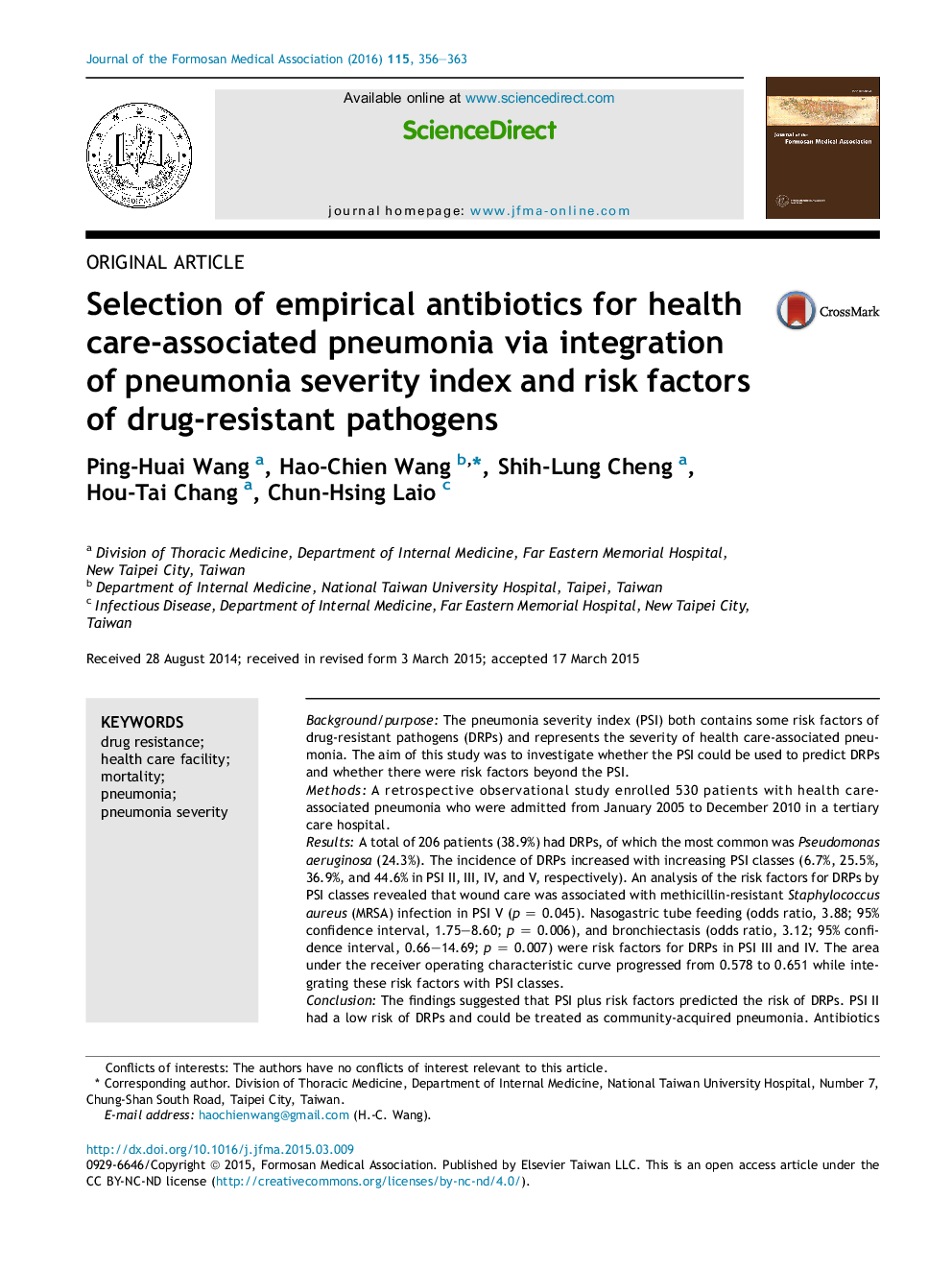| کد مقاله | کد نشریه | سال انتشار | مقاله انگلیسی | نسخه تمام متن |
|---|---|---|---|---|
| 3478404 | 1233398 | 2016 | 8 صفحه PDF | دانلود رایگان |
Background/purposeThe pneumonia severity index (PSI) both contains some risk factors of drug-resistant pathogens (DRPs) and represents the severity of health care-associated pneumonia. The aim of this study was to investigate whether the PSI could be used to predict DRPs and whether there were risk factors beyond the PSI.MethodsA retrospective observational study enrolled 530 patients with health care-associated pneumonia who were admitted from January 2005 to December 2010 in a tertiary care hospital.ResultsA total of 206 patients (38.9%) had DRPs, of which the most common was Pseudomonas aeruginosa (24.3%). The incidence of DRPs increased with increasing PSI classes (6.7%, 25.5%, 36.9%, and 44.6% in PSI II, III, IV, and V, respectively). An analysis of the risk factors for DRPs by PSI classes revealed that wound care was associated with methicillin-resistant Staphylococcus aureus (MRSA) infection in PSI V (p = 0.045). Nasogastric tube feeding (odds ratio, 3.88; 95% confidence interval, 1.75–8.60; p = 0.006), and bronchiectasis (odds ratio, 3.12; 95% confidence interval, 0.66–14.69; p = 0.007) were risk factors for DRPs in PSI III and IV. The area under the receiver operating characteristic curve progressed from 0.578 to 0.651 while integrating these risk factors with PSI classes.ConclusionThe findings suggested that PSI plus risk factors predicted the risk of DRPs. PSI II had a low risk of DRPs and could be treated as community-acquired pneumonia. Antibiotics of PSI III and IV with risk factors could be targeted DRPs. PSI V with wound care had a higher risk of MRSA, and empirical anti-MRSA antibiotics could be added.
Journal: Journal of the Formosan Medical Association - Volume 115, Issue 5, May 2016, Pages 356–363
